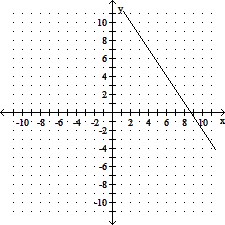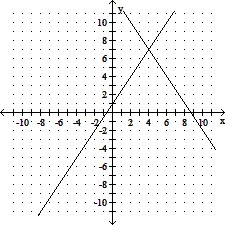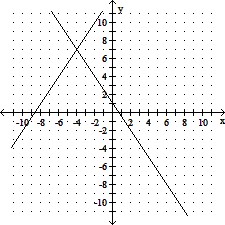Provide an appropriate response.Fill in the blank with "always greater than," "sometimes greater than," "always less than," or "cannot be determined," whichever response is correct. When dividing a positive fraction by  , the answer is
, the answer is  the fraction.
the fraction.
A. always greater than
B. always less than
C. sometimes greater than
D. cannot be determined
Answer: A
You might also like to view...
The solution(s) of the equation 

src="https://sciemce.com/media/3/ppg__cognero__Section_2.4_Solving_Nonlinear_Equations__media__63d192e4-b427-46cd-a470-12de78ca2bc4.PNG" style="top: 25px; width: 35px; height: 13px; vertical-align: middle;" />. Answer the following statement true (T) or false (F)
Match the system with the appropriate graph.A system with solution (4, 7)
A. 
B. 
C. 
D. 
Solve the problem.In North America, coyotes are one of the few species with an expanding range. The future population of coyotes in a region of Mississippi valley can be modeled by the equation  , where t is time in years. Use the equation to determine when the population will reach 170. (Round your answer to the nearest tenth year.)
, where t is time in years. Use the equation to determine when the population will reach 170. (Round your answer to the nearest tenth year.)
A. 583.1 years B. 581.3 years C. 578.0 years D. 586.2 years
Determine whether the statement is True or False. = 2.33
= 2.33
A. False B. True